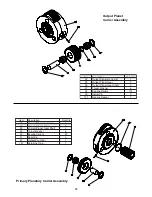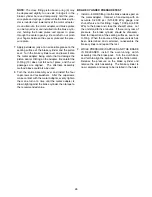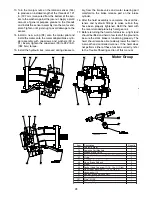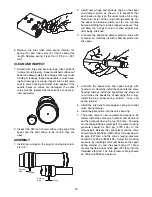
B. Apply a stall pull load on the hoist
while monitoring pressure.
C. Compare gauge reading to hoist
specifications. Adjust relief valve
as required.
NOTE:
If pressure does not
increase in proportion to adjust-
ment, relief valve may be con-
taminated or worn out. In either
case, the relief valve may require
disassembly or replacement.
3. Be certain hydraulic system tem-
perature is not more than 180°F
(82°C). Excessive hydraulic oil
temperatures increase motor
internal leakage and reduces
motor performance.
4. Hoist line pull rating is based on
1st layer of wire rope.
5. Rigging and sheaves not operat-
ing efficiently.
Same as remedies for Trouble
D1 & D2.
Same as remedies for Trouble
E2.
Refer to hoist performance
charts for additional information.
Perform rigging service as rec-
ommended by crane manufac-
turer.
Same as remedies for Trouble
D1.
Thoroughly clean exterior and
flush interior.
Fill/drain to proper level.
Same as remedies for Trouble
D2.
Engine low on horsepower or
R.P.M. Tune/adjust engine.
Check suction line for damage.
Pump worn. Replace pump.
Use correct hydraulic oil.
Disassemble
hoist
to inspect/
replace worn parts.
1.
Same as D1.
2.
Be certain that the hydraulic
system temperature is not
more than 180°F (82°C).
Excessive hydraulic oil temper-
atures may be caused by:
A. Plugged heat exchanger.
B. Too low or too high oil level in
hydraulic reservoir.
C. Same as D2
D. Hydraulic pump not operating
efficiently.
E. Hydraulic oil is wrong viscosity
for operating conditions.
3. Excessively worn or damaged
internal winch parts.
The winch runs hot.
E
TROUBLE
PROBABLE CAUSE
REMEDY
T
ROUBLE
“D” C
ONTINUED
F
ROM
P
REVIOUS
P
AGE
18













































